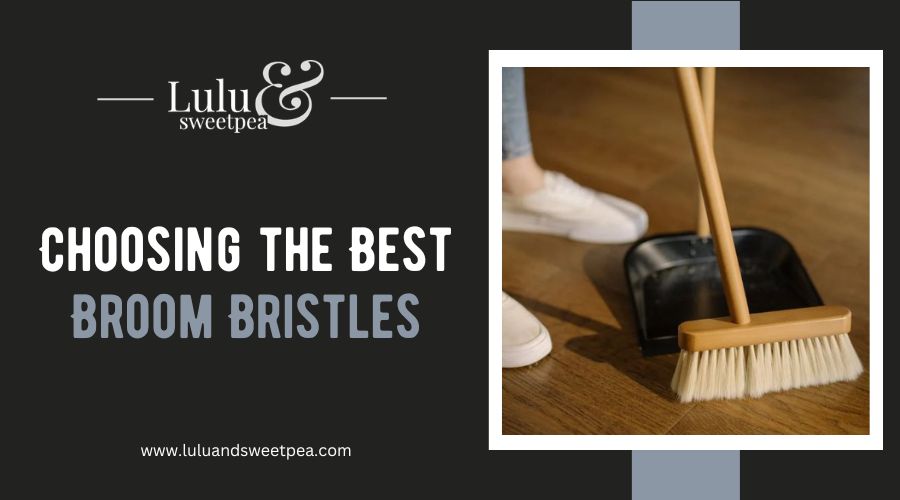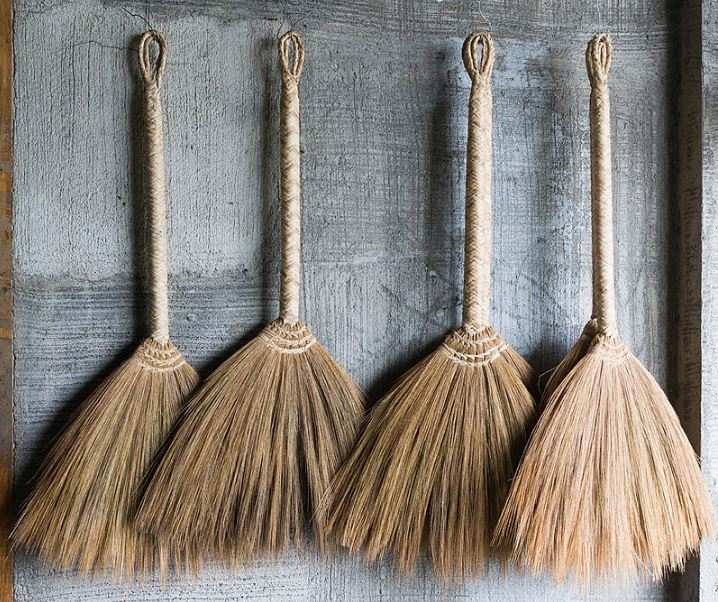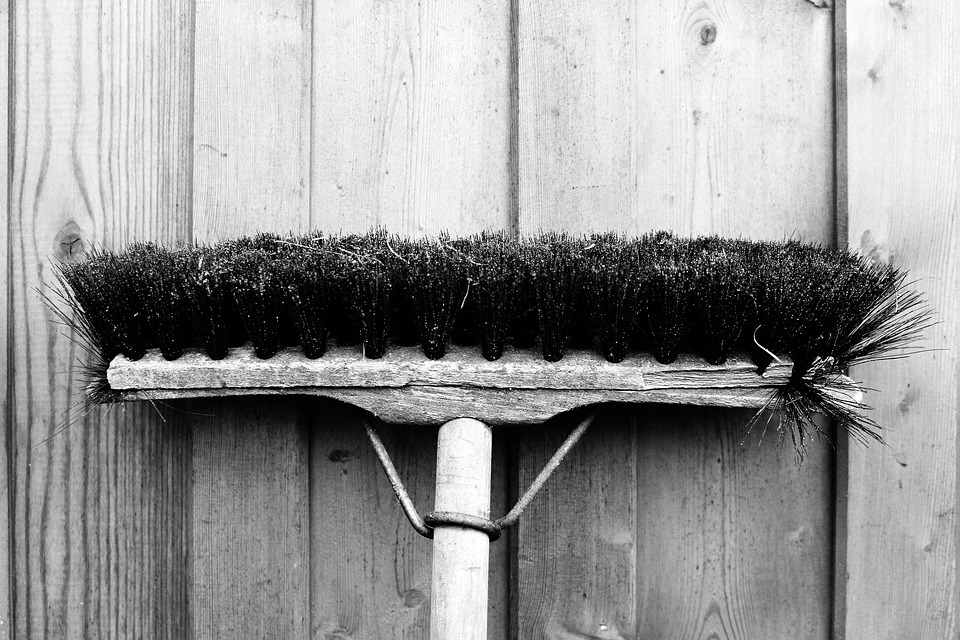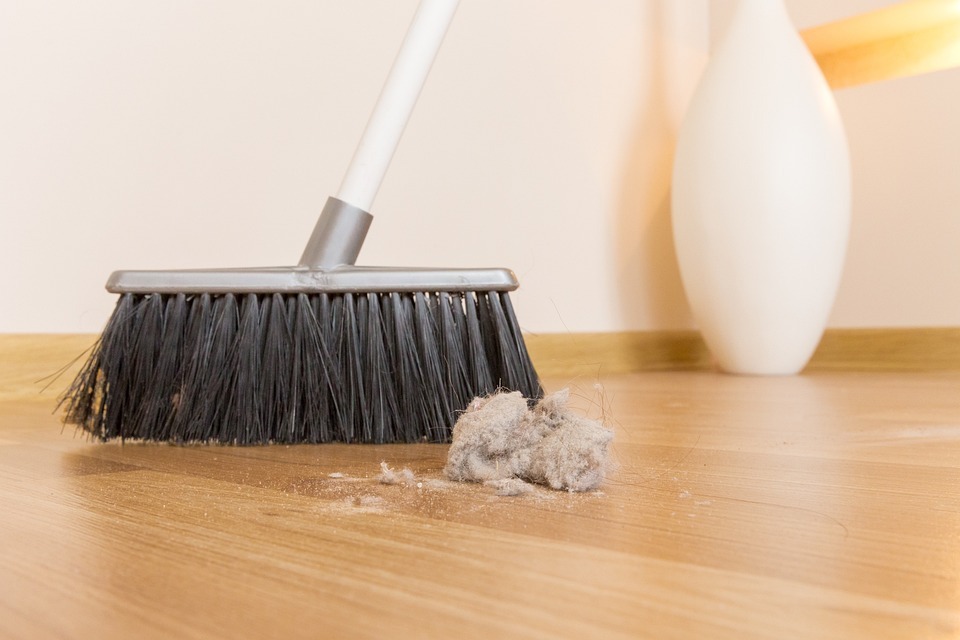Brooms are among the simplest but most essential tools in your cleaning toolbox, and they come in various forms to suit varied demands. Brooms can occasionally remove dust and dirt from edges and corners more effectively than a vacuum cleaner.
You have a wide range of bristle-type options when purchasing brooms. The efficiency of the brush for your application depends on them.
For instance, when working with fine powders, choosing a bristle type that is too firm will prevent the material from being picked up. An overly stiff broom bristle might leave scrapes or scars that encourage the growth of bacteria.
To help you choose the appropriate broom bristle for your needs, we’ll go through the distinctions between each type of bristle below.
Types of Bristles
Broom bristles come in two primary types: flagged and unflagged. There isn’t a bristle kind that is superior to the other, albeit unflagged bristles typically survive longer than flagged bristles. Finding the appropriate tool depends on their respective areas of specialization.
Flagged
Because the ends of these bristles are frayed, they may pick up small pieces of debris and dust more effectively.
Unflagged
In open spaces, these bristles are better at transporting dirt, bigger debris, and dust since they tend to last longer than marked bristles.
Bristle Materials
To suit any application, a variety of bristle materials are available. A material that excels at a certain function should be utilized, or you could choose something adaptable that you may use throughout your spaces. Using a variety of materials to ensure that all of your floor surfaces are well maintained is a wonderful idea.
Natural and Soft
Corn husks and grass are only a couple of the materials used to make soft bristles. The grass brooms made in other nations like Vietnam, Thailand, and the Philippines are softer than those made of corn.
Typically, corn brooms are utilized in exterior spaces, including driveways, garages, and patios. On the other hand, you can clean inside with their softer grass equivalents. Another common soft and natural fiber used to make broom bristles is Tampico.
Medium Bristles
Bristles with a medium stiffness are frequently used in floor sweeps and while moving bulky material. They work well in wet and dry settings.
Hard and Natural
For usage outdoors, hard bristles brushes are created from more rugged materials like palmyra or coconut sticks.
These are frequently short and thick and work well for sweeping and washing heavy objects. For extremely demanding or high-temperature applications, such as conveyors or ovens, hard bristles brushes are excellent. To prevent scratching or scarring, avoid using these bristles on stainless steel equipment.
Soft/Stiff Bristles
The front of this broom’s stiff bristles push heavier particles and dislodge stubborn gunk. And the broom’s gentle back bristles remove any loose, tiny debris. These dual-purpose, wet/dry push brooms are appropriate for all kitchen and restaurant environments.
Natural Corn Fibers
Bristles made of natural corn fiber work well for sweeping fine dirt and dust in dry environments. These bristles are produced from corn straw that has been skillfully bonded and hewn, making them incredibly strong without harming your floors.
Tampico Fibers
Tampico fibers, which are made from the Mexican agave plant’s stem, have a medium texture and work well for dry sweeping over uneven surfaces. These natural fibers are also chemical and heat-resistant.
Synthetic Corn
Synthetic corn bristles are resistant to chemicals and liquids and can tolerate temperatures of up to 225 degrees Fahrenheit. Bristles with an “X” form work well on entry mats and carpets.
Horsehair
Horsehair bristles are soft on floors and long-lasting for frequent usage. Perfect for sweeping dust and filth in interior spaces, this kind of bristle blends in well with other types of bristles.
Palmyra
This kind of bristle is perfect for industrial workstations or food service facilities because it is sturdy and on the stiffer side. They are highly resilient and can withstand a ton of labor and harsh debris without suffering any harm. Palmyra can tolerate regular usage and is great for routine cleaning.
Palmyra fibers can easily sweep rubber, big bits of mud, stones, and sticks, whereas softer bristles would struggle to do so. They work well for clearing a jobsite or removing washed-out gravel and rock from a pathway, but they are not the best for good cleaning inside your home or office.
Plastic
When it comes to plastic bristles, there are numerous options. The two most common materials are Polypropylene and Nylon. Both are resistant to the majority of chemicals and oils and can be used wet or dry.
Polypropylene
Polypropylene offers strong shear/break strength and abrasion resistance, making it ideal for medium to heavy floor sweepers. It won’t stain, discolor, or absorb odors and is resistant to water, solvents, acids, oils, fungus, and bacteria growth. Applications can be for indoors or outdoors, wet or dry.
Broom bristles made of this considerably more durable material work incredibly well to clean harder surfaces like an outdoor pathway, a garage, a basement, or a porch. The soft and stiff fiber combination can handle most items that need to be swept up. This broom can catch larger things like twigs and clumps of dirt in addition to dust and sawdust since it has hard fibers inside and soft ones on the outside.
Nylon
For general cleansing of minor dirt on smooth floors like laminate or hardwood, nylon bristles are firm yet flexible. Although they are typically used inside, these brooms do not absorb odors or water.
Synthetic
Because synthetic bristles are so resistant to acids and oils, you can use them on both wet and dry surfaces. You won’t scratch the surfaces of your floor due to the flexible nature of synthetic bristles.
Recycled PET
Although robust, these fibers are not as durable as some other bristle alternatives. They are an excellent balance of strong and soft, making it easy for consumers to clean inside and out. The bristles are made to last for a very long time, but if you use them to clean up a lot of trash and waste, they will wear out more quickly than if you use them inside.
Keeping Your Broom Clean
Brooms tend to gather dirt, grit, and filth because of how they are utilized. Therefore, routine cleanings (check out these efficient cleaning methods that can save you more time) are crucial to maintain your brooms’ cleanliness and stop the spread of filth. Additionally, if the broom is constantly maintained, it will clean with greater efficiency.



